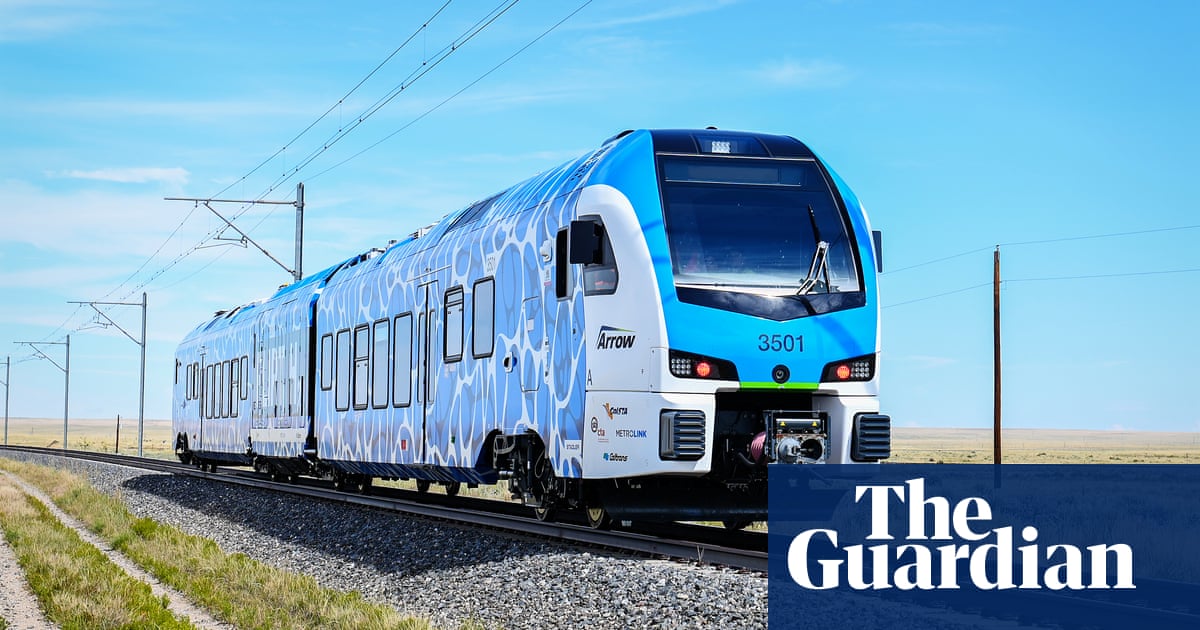There’s a new train pulling into the station in San Bernardino, a southern California city about 60 miles from Los Angeles. From the outside, it looks like any other commuter train, with three passenger carriages, blocky windows and a colourful blue exterior.
But inside, it’s unlike anything the region – or the country – has seen before. The $20m Zero-Emission Multiple Unit, known as Zemu, uses a hybrid hydrogen fuel cell and battery system to propel the train and run other onboard electrical systems. The only byproduct of the fuel cell is water vapour, a welcome change in an area known as the Inland Empire that suffers from some of the worst air quality rates in the country.
The new technology will make Zemu the first hydrogen-powered, zero-emissions passenger train in North America to meet Federal Railroad Administration (FRA) requirements when it goes into service early next year.
…
the first hydrogen-powered, zero-emissions passenger train
That depends entirely on how the hydrogen is being produced: it’s an energy storage medium, not an energy source.
Though the onboard process does not directly emit greenhouse gases, the production processes to create hydrogen fuel in the US almost always do.
100% agree, this article glosses over that (and many other aspects) of this supposedly newfangled system.
But what’s wrong with working in parallel? Develop hydrogen while the grid becoming greener. A traditional electric train has the same issue of being grid based.
I posted this because I think this is absolutely silly. A hydrogen-powered train that runs on a low-volume 9-mile track? Why on earth couldn’t this just run on gantry-provided electric power? I guess it’s fine as an experimental trial system, but let’s not pretend that hydrogen is better than electric in basically every rail application imaginable.
it’s also hilarious that the picture in the article shows overhead wires
To play H2’s advocate for a moment, if LA can’t seem to get the financial and political backing to invest in electrification quickly, it is a potential way for LA to pull a “passenger train network” out of its ass in time for the 2028 Olympics…
It’s quieter and no emissions at the location of travel kind similar to CNG/LNG. (Some electricity face similar problems of not being zero emissions from generation)… but I do think it’s worth exploring for some minor applications.
Edit: to be clear, electric and battery trains are better technologies by miles and miles. Just that the oil and freight rail lobbyists are in California’s pocket for now so I’m just saying the best case scenario for Los Angeles given the powers that be and hold SoCal back
Honestly, if LA did tons of rail and it was all diesel powered, it would still be a huge improvement in carbon emissions, not to mention the traffic and urban density benefits.




